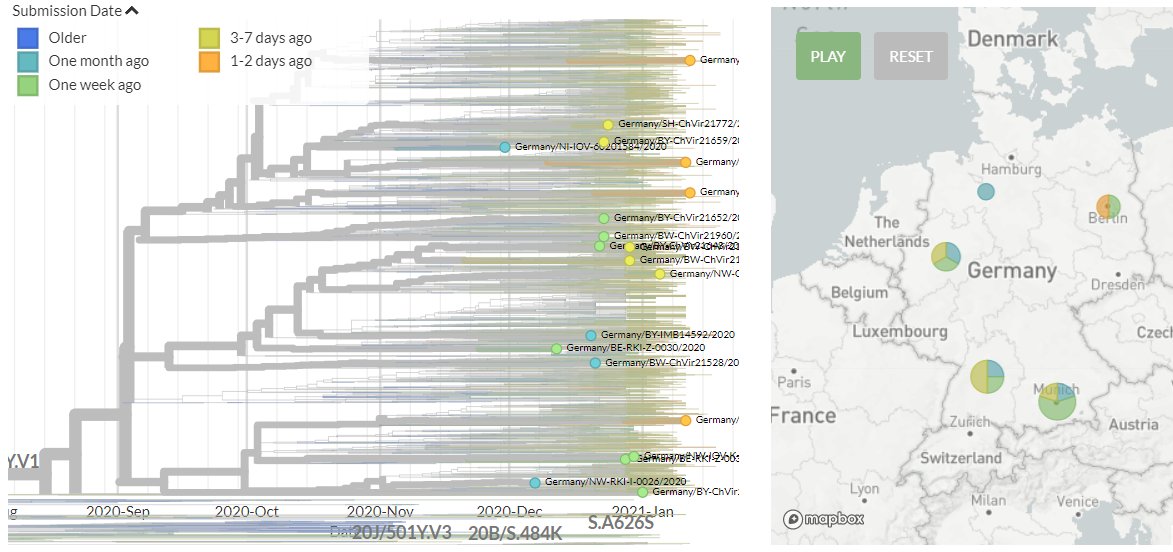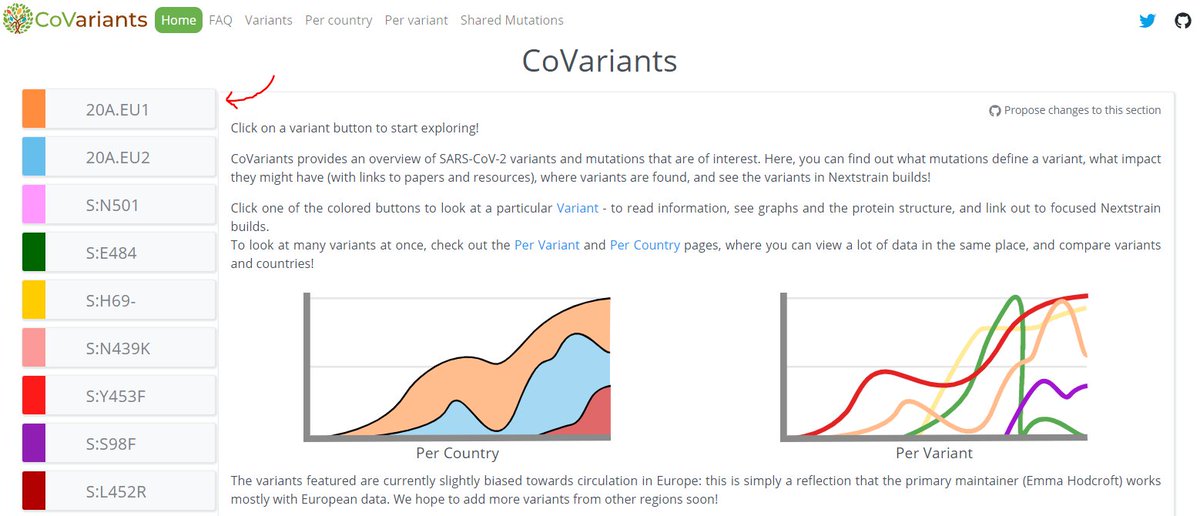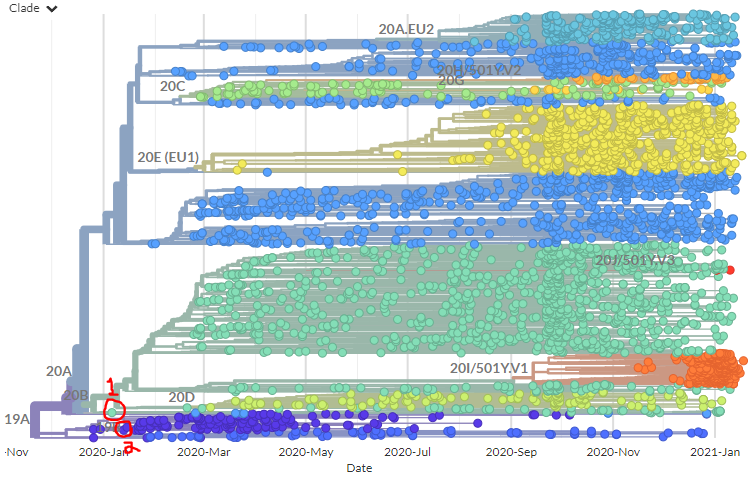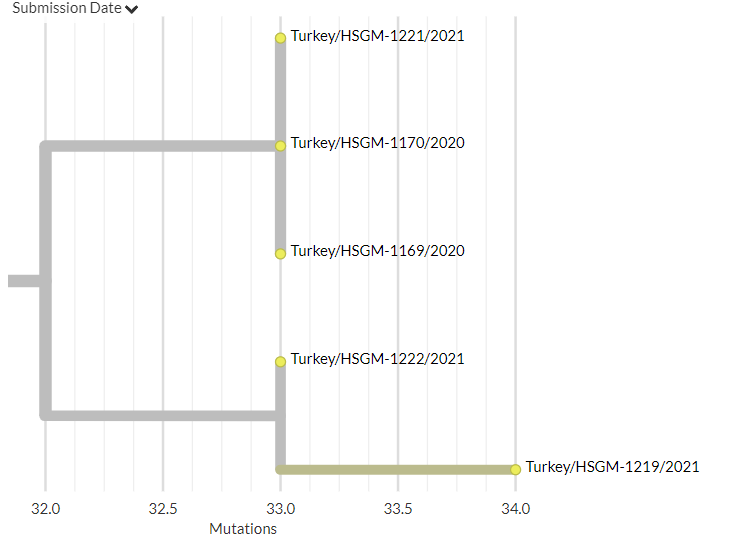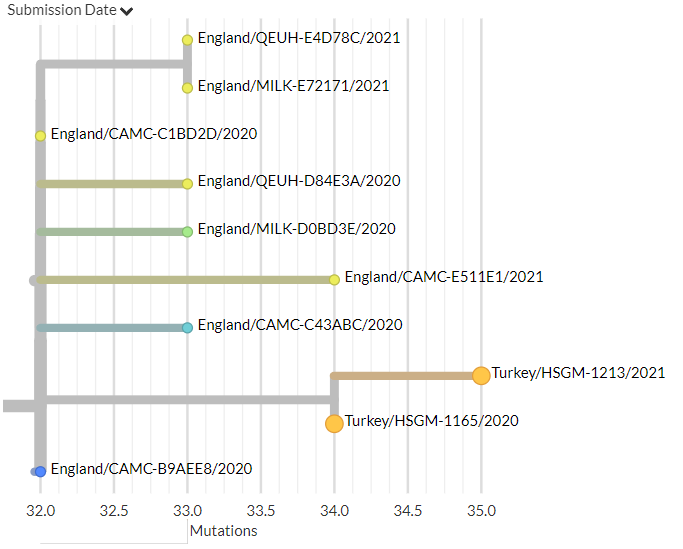
The S:N501 build is now updated with data from 25th Jan.
Remember, you can always check on any country by just typing that country name in the 'Filter' box on the left menu!
1/18
nextstrain.org/groups/neherla…
Remember, you can always check on any country by just typing that country name in the 'Filter' box on the left menu!
1/18
nextstrain.org/groups/neherla…

In the 501Y.V1 (B.1.1.7) variant, here are a few of the non-UK countries with new sequences in this variant, including Denmark, Italy, Spain, France, Portugal, Norway, Germany, the USA, South Kora, & Switzerland, & the UAE, Austria, & Czech Republic for the 1st time
2/18
2/18

Denmark has 52 new samples (some yellow), showing both separate introductions and further spread of existing local clusters.
3/18
3/18
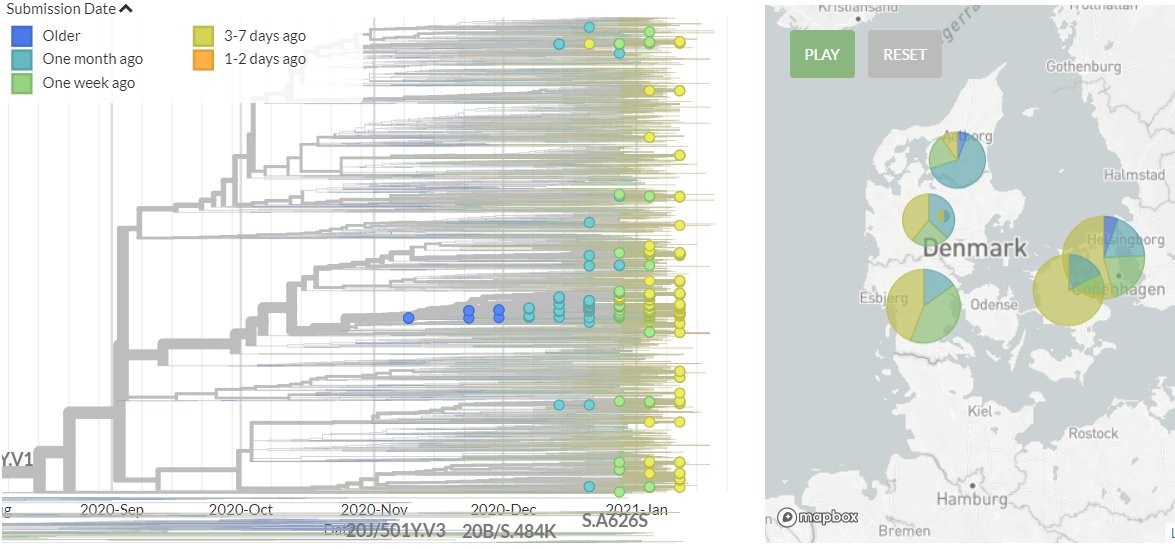
Spain has 62 new sequences (orange & yellow). Many of these are separate introductions, and a few new sequences form distinct clusters. Some new sequences also cluster closely with older sequences (green).
4/18

4/18
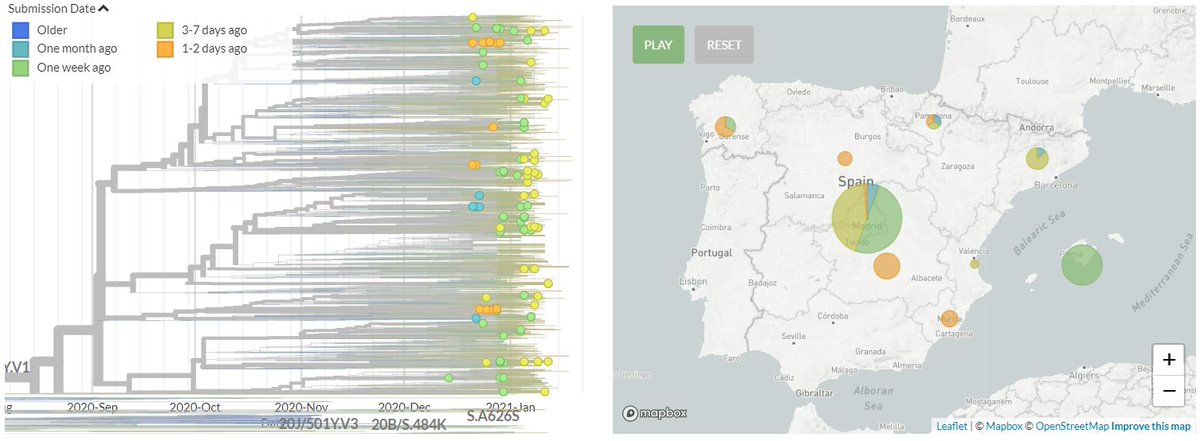
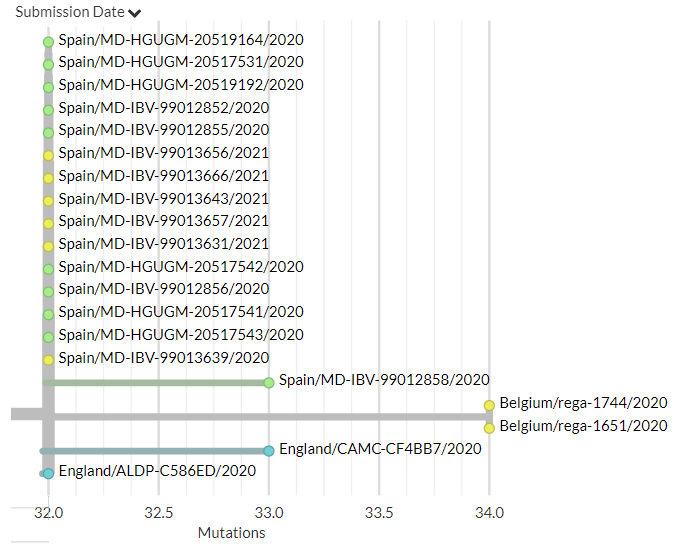
France has 72 new sequences (orange & yellow). These show both separate introductions and clustering with older sequences.
5/18

5/18
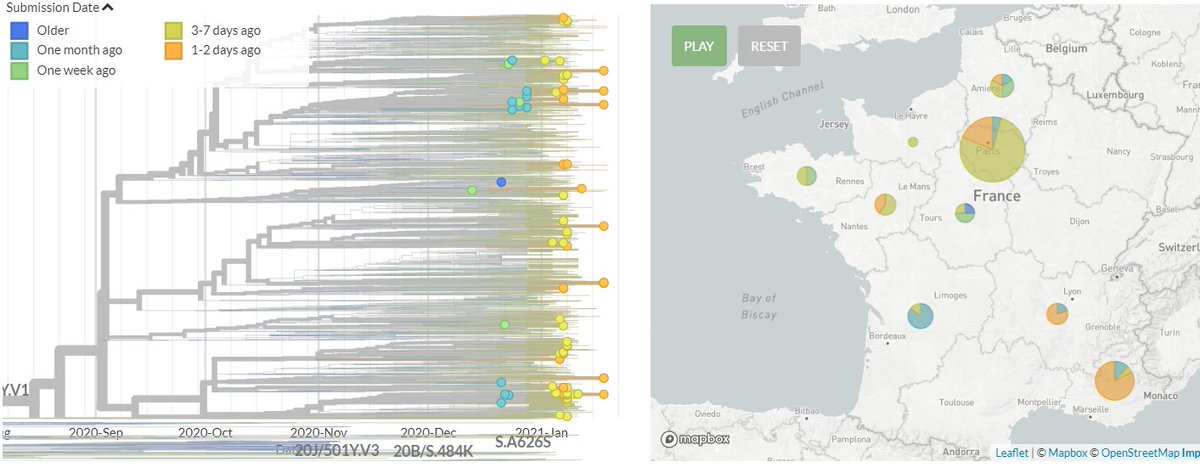

Portugal has 30 new sequences (orange), most of which are separate introductions, but some do connect with previous sequences.
Norway has 10 new sequences (yellow). Most of these seem to be separate introductions.
6/18

Norway has 10 new sequences (yellow). Most of these seem to be separate introductions.
6/18
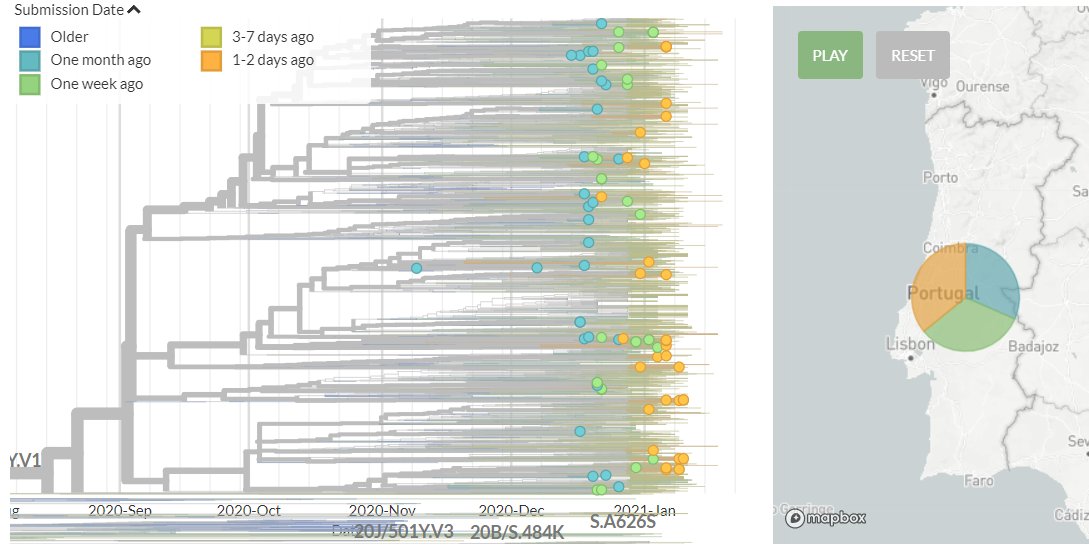
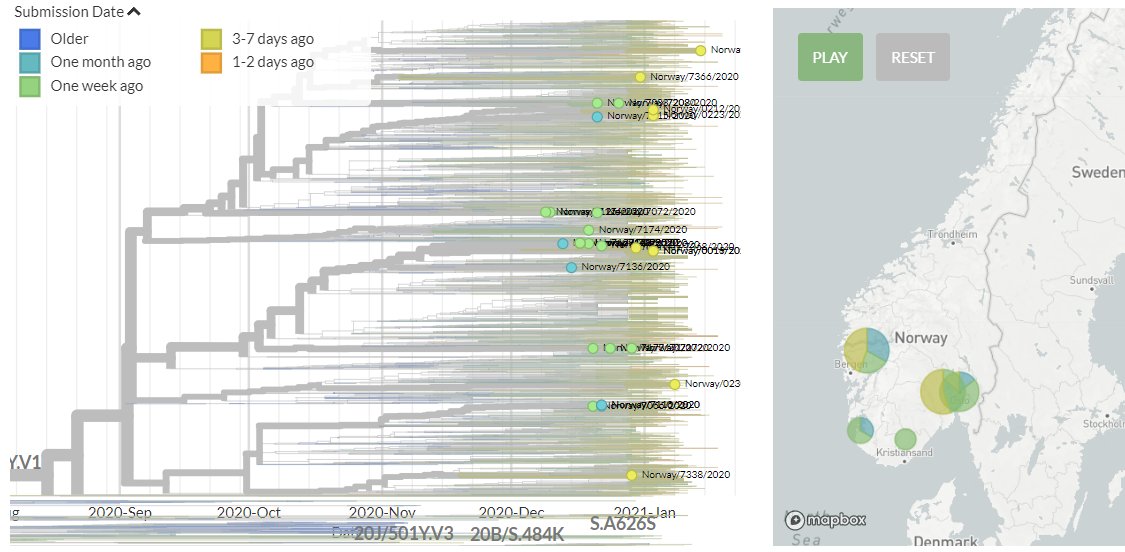
There are 10 new sequences from South Korea (yellow). These are separate introductions, but some of the new seqs cluster, which could indicate local transmission or a common exposure source.
7/18

7/18

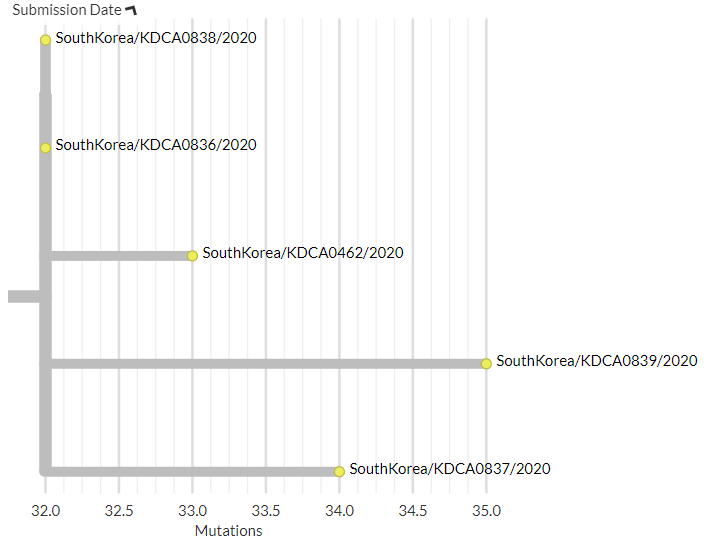
The USA has 123 new sequences (orange & yellow). Many of these do cluster with older sequences and seem to indicate ongoing local transmission.
9/18


9/18
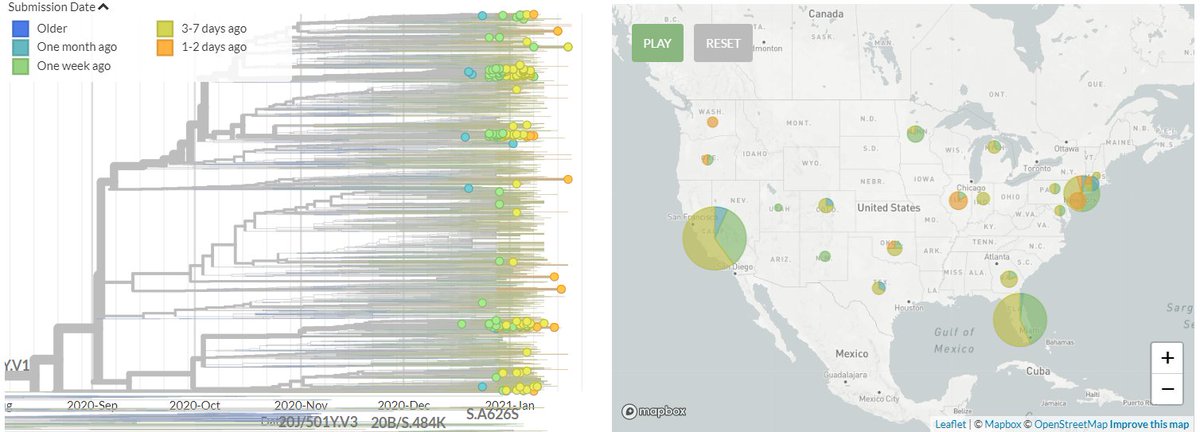

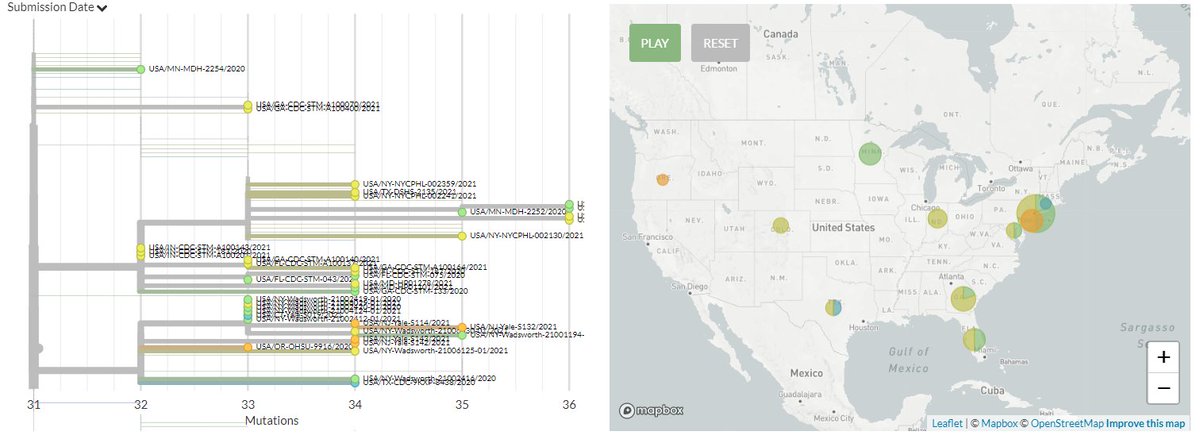
Switzerland has 30 new sequences (yellow & orange), many of which indicate separate introductions.
10/18
10/18
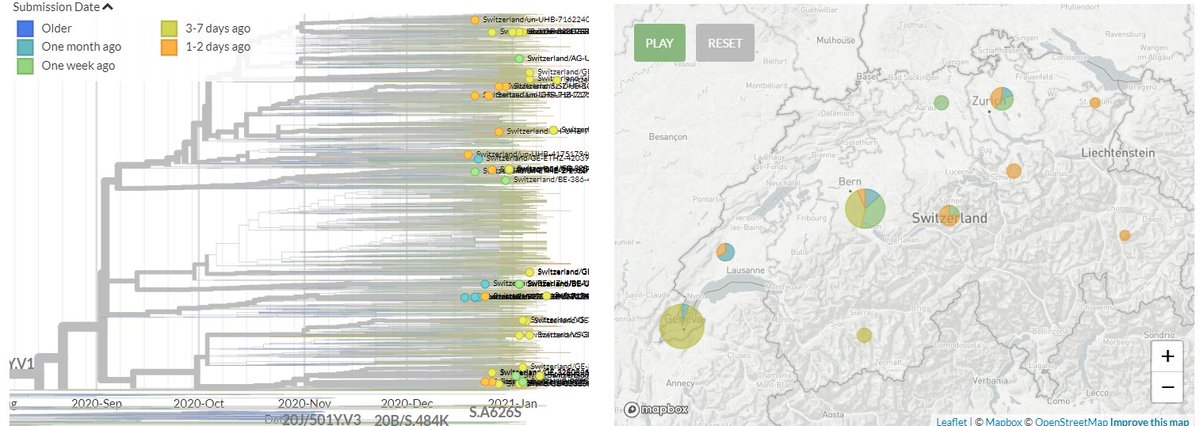
India has 3 new sequences (yellow). These connect to older sequences, which may indicate local transmission or a common exposure source.
11/18


11/18
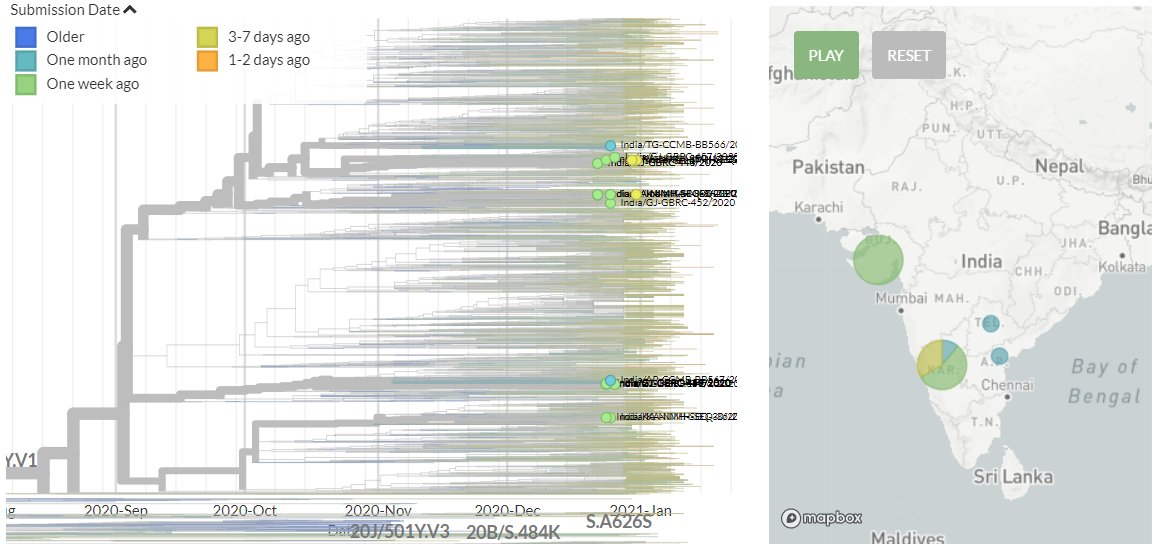
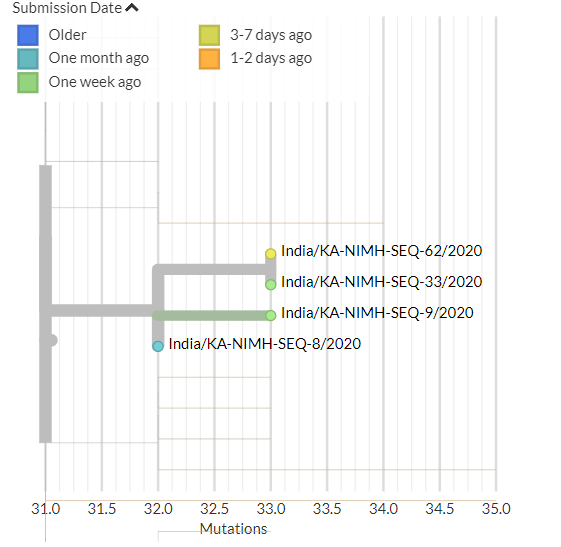

United Arab Emirates has 21 sequences for the first time. Many show independent introductions, but some form a large cluster that is likely local transmission.
12/18

12/18
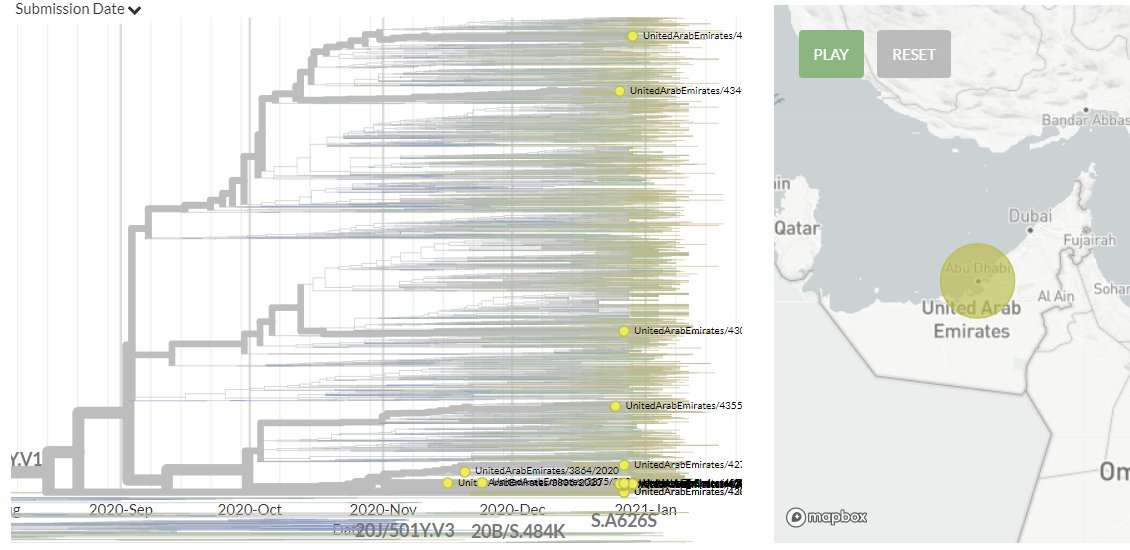

The Czech Republic has 10 sequences for the 1st time and Austria has 41 sequences for the 1st time.
All the Czech & many of the Austrian seqs fall in 1 cluster each, likely indicating local transmission. These clusters are near each other & connected to Slovakian seqs.
13/18


All the Czech & many of the Austrian seqs fall in 1 cluster each, likely indicating local transmission. These clusters are near each other & connected to Slovakian seqs.
13/18

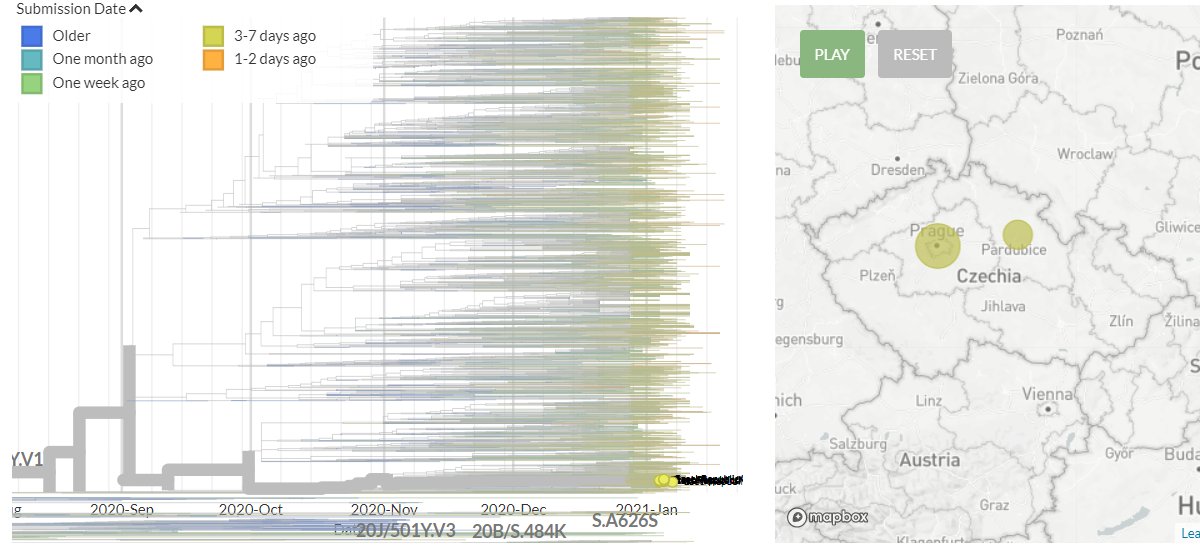
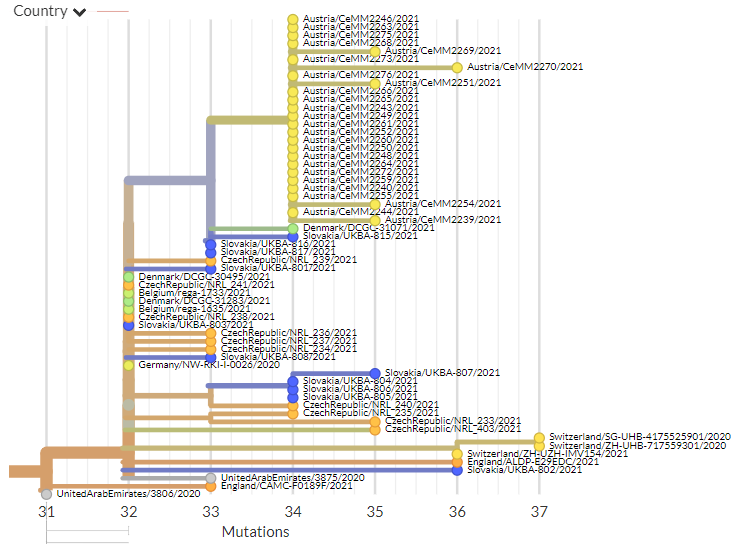
In 501Y.V2, there are new sequences from Germany, Denmark, Spain, the United Arab Emirates, and Belgium.
14/18
14/18

Germany has 4 new sequences (yellow & orange). Some indicate a new introduction, others link to an older sequence.
15/18

15/18
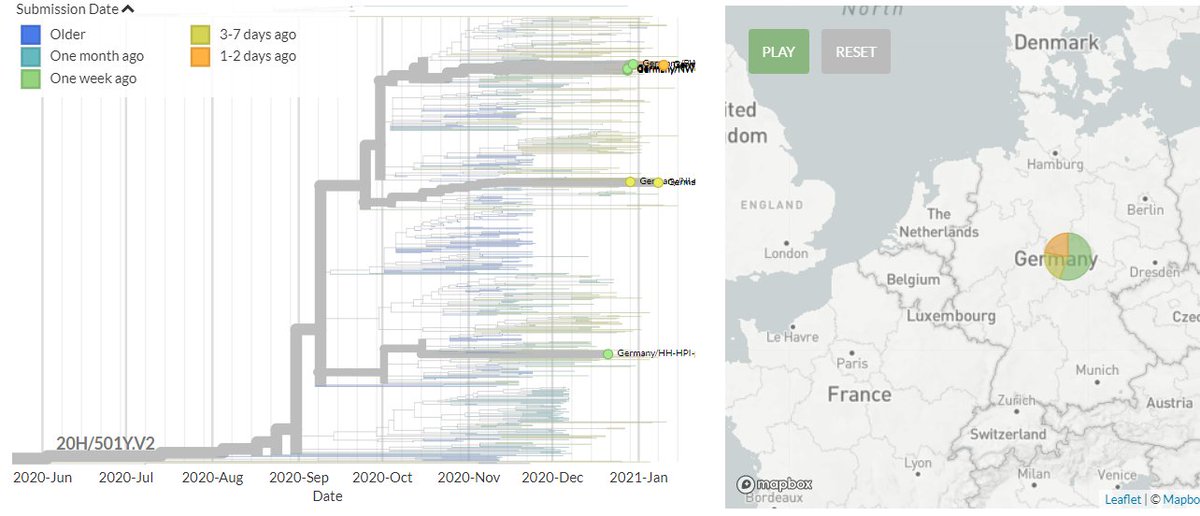
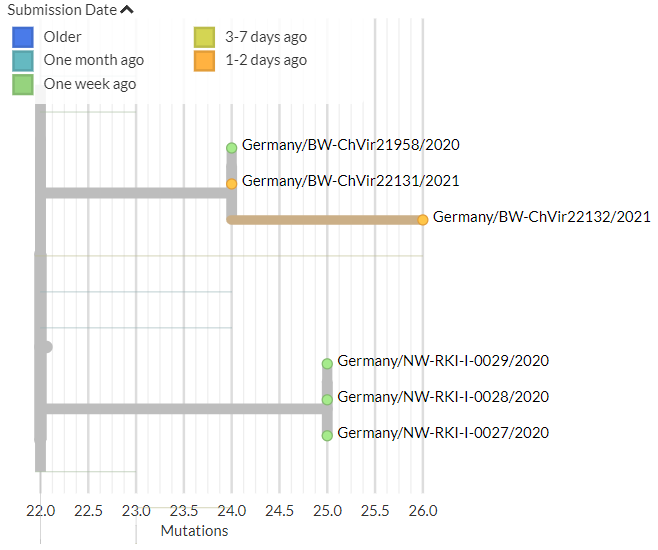
Belgium has 6 sequences for the first time, showing multiple introductions.
Denmark and Spain also have sequences for the first time.
17/18

Denmark and Spain also have sequences for the first time.
17/18


As always, the country plot table is now updated - as usual, be careful interpreting, as sequencing is often still biased toward "S-drop-out" & S:N501 samples, meaning frequencies are not representative.
18/18
github.com/hodcroftlab/co…
18/18
github.com/hodcroftlab/co…
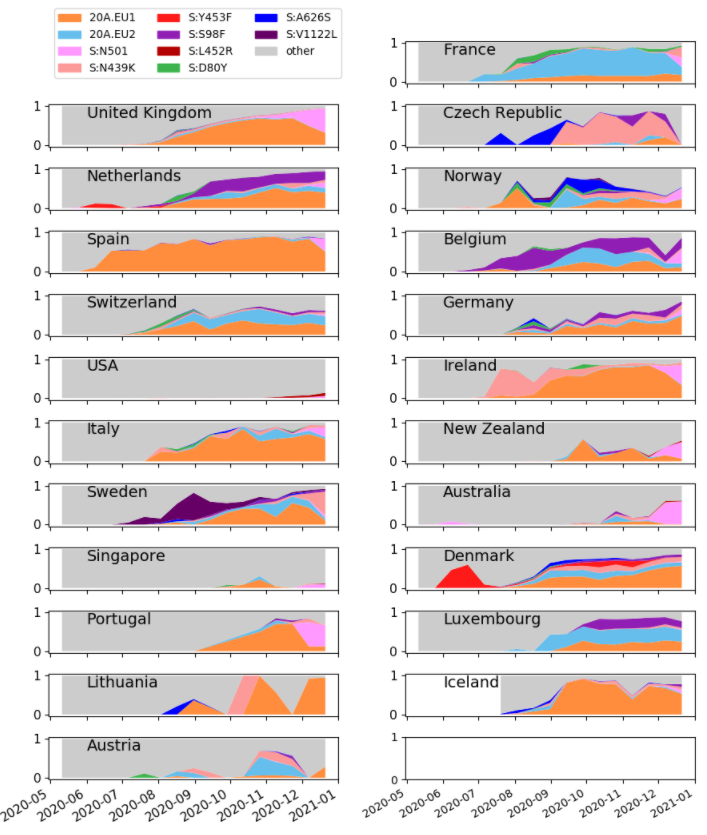
• • •
Missing some Tweet in this thread? You can try to
force a refresh
